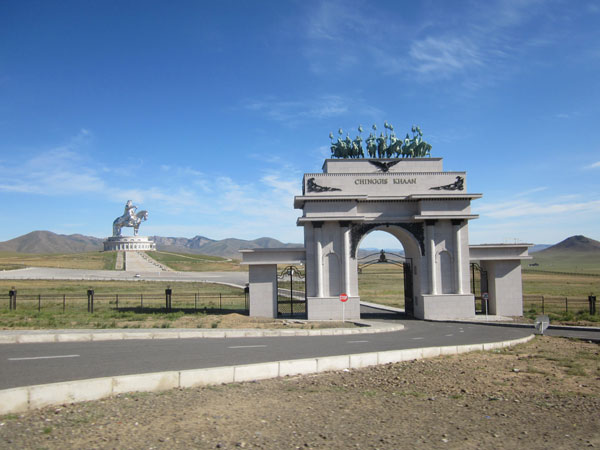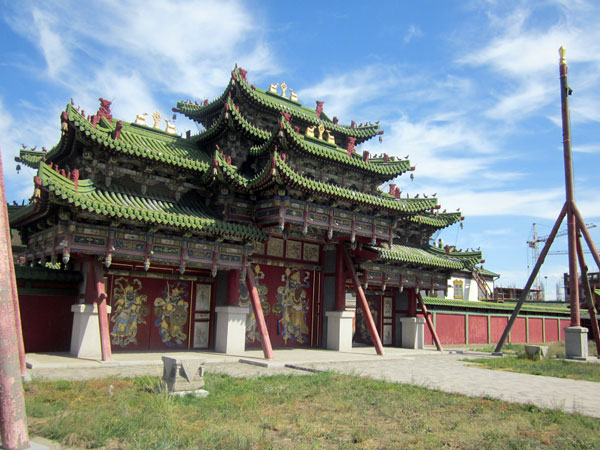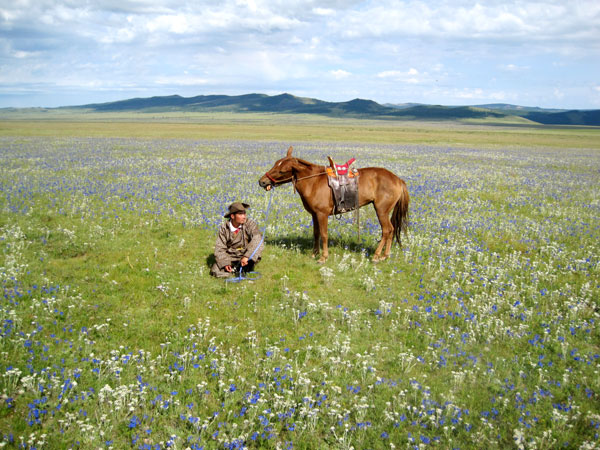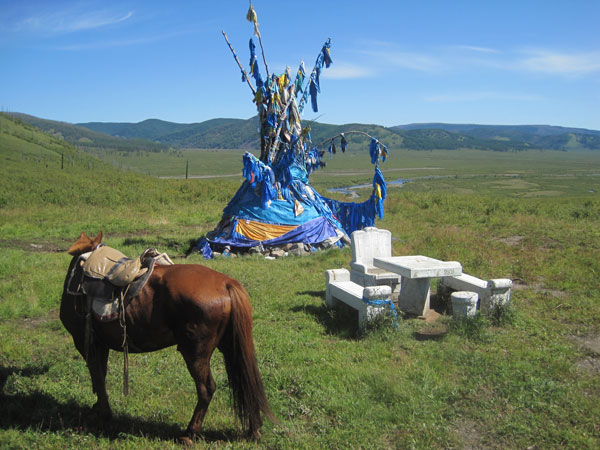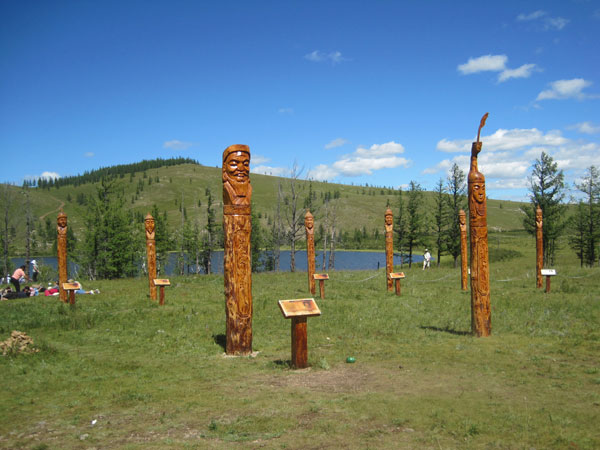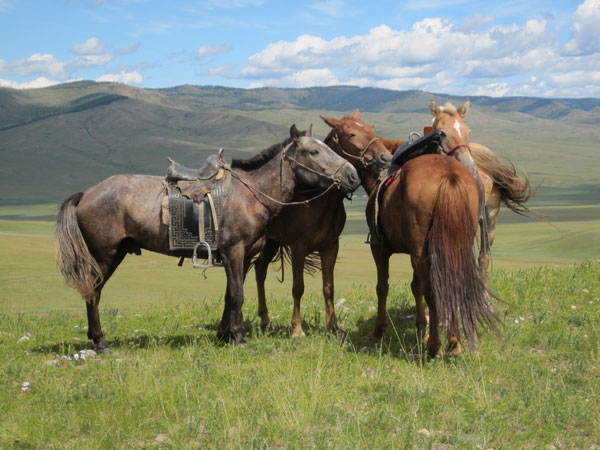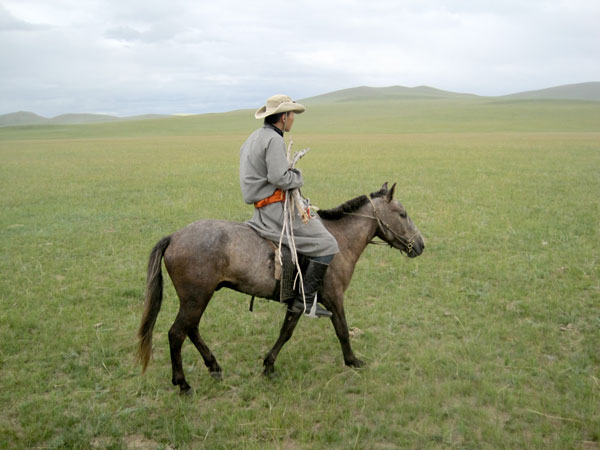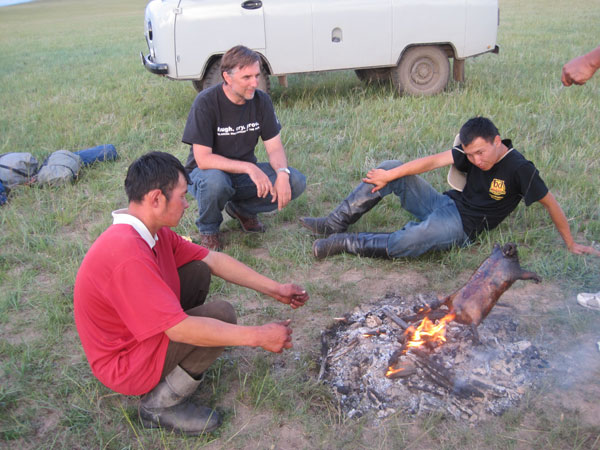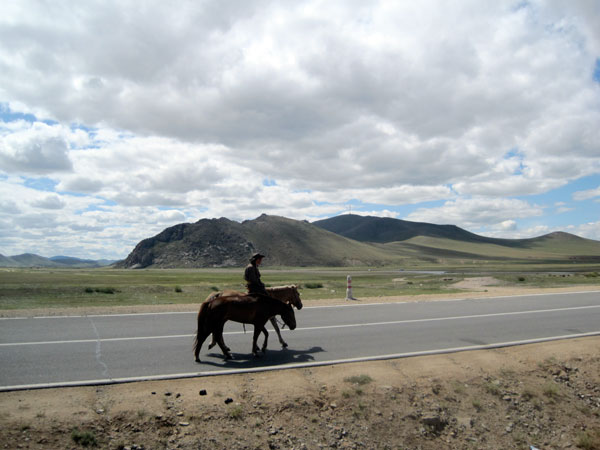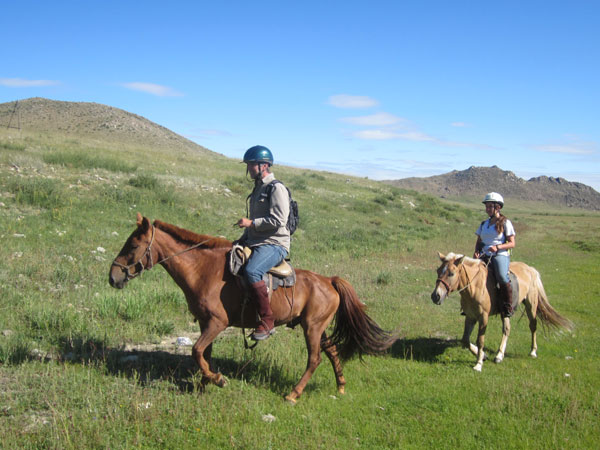The Book That Waited: The Loss and Rediscovery of The Secret History of the Mongols
Photos: Eliza Robertson
When my dad and I decided to spend two weeks traveling in northern Mongolia, it was not for literary reasons. We brought books, as we always did while traveling—probably more than was reasonable for ten days to be spent in tents and on horseback—and I carried an unlined leather journal (which was left woefully blank once the Mongolian sun startled me to life). But the intent of our ten-day horseback trek to visit important sights in the life of Genghis Khan—one that had ruminated in our thoughts since my dad had promised me a two-week trip anywhere in the world with him when I was still in grade school—was to discover the land and its people and to spend time with each other, not to lose ourselves in literature.
Books, like many other comforts thought common in the sedentary world, are not as readily available in nomadic Mongolia. Looking back, the scarcity of books in Mongolia is not altogether surprising. Most Mongolians do not need to crack open a copy of Return of the King to imagine galloping across open plains, unmarked by anything but shrub grass and slow rivers—they merely need to step outside. Indeed, as we crossed the steppe, I felt as though I were passing through the pages of every fantasy novel I had ever read. Surely Gandalf had ridden Shadowfax down this very road, and Eragon and Saphira must not have been far behind. Once we crossed a field of wildflowers, and I could have sworn that I could hear Howl and Sophie laughing just across the ridge.
We soon discovered, however, that our trip followed more footsteps than those of the paper-and-ink heroes of English fantasy. As it turns out, Mongolian literary history is far from barren. In tracking the life of Genghis Khan, we were following the protagonist of perhaps the most important work of literature ever written in Mongolia: The Secret History of the Mongols. I first learned of this book in the early days of our trip, while we were still sightseeing in Ulaanbaatar. A gold-plated copy rests in the back hall of the Mongolian capitol building. Gerelt-Od, our guide, informed us of this as we rested on a bench in Sükhbaatar Square, the central plaza in front of the capitol. According to him, it is far from the only copy of the Secret History in Mongolia today. Richly ornamented editions can be found like family Bibles in almost every ger (round, cone-shaped tent that is the primary dwelling of most nomadic Mongolians) in the country, and cheap copies are as numerous in local stores as Gideon Bibles in American hotels and Little Red Books in Chinese airport gift shops.
From Sükhbaatar Square, our next destination was the National Museum of Mongolia, located just off the main plaza. As we wandered through the air-conditioned halls, Od told us more about the Secret History. About its origin, very little is certain. It has been suggested that, because of the wealth of information it provides, the Secret History was written by a close friend or family member of Genghis Khan, but there is no evidence to suggest anything else about the author. It is generally agreed that it was written in the thirteenth century. Proposed dates range from the late 1220s to 1245 C.E. It was likely written in a tribal dialect—Uyghur and h’Pgaspa are the most common proposals—but the identity of its original language remains unknown. Even the exact meaning of the title is uncertain scholars have proposed that the work is “secret” for a variety of reasons: the confidentiality of the dynastic record, that it was intended only for the readership of the imperial line, intended only for the readership of Mongolians, or simply because it was so little circulated.
But how, I wondered, could so little be known about such an integral part of Mongolian history? Surely if the Secret History was as ubiquitous as Od suggested, someone would have noticed at least in which language it was written. But before I had time to wonder further, Od continued his narrative.
It seems the Secret History remained a secret for centuries, and not only from non-Mongols or people outside of the dynastic line. At some point soon after its composition, all copies of the Secret History disappeared from Mongolia. The cause of this disappearance remains unknown. It may have been lost during the fragmentation of the empire during the Yuan Dynasty, or under the creation of a new written script commissioned by Kublai Khan in 1269. In any case, by the fifteenth century the only remaining copies of the Secret History were translations used by Chinese scholars to teach the Mongolian language. In effect, the Secret History went into hibernation, occasionally poked at by scholars unaware that the strange creature before them was the last of its kind.
The Secret History went undiscovered for centuries. It remained, largely unexamined, in the hands of a few Chinese scholars until the Russian monk Archimandrite Palladius discovered an abridged copy and translated it into Russian. The year was 1866. Palladius, unlike those who had viewed the text before him, recognized its significance. It had been previously assumed that the study of Mongolian history was nearly impossible, because nomads left no written record. But here was a comprehensive account of the formation of the Mongol Empire, told by someone close to its founder. Moreover, the text did not glorify him as other extant scraps of writing did. It cast him in a favorable light, yes, but it did not gloss over his flaws in favor of portraying him as a god.
Palladius’s work sparked a chain of discoveries. An earlier edition, composed of Chinese-character phonetic translations of the original Mongolian, was soon found. This version, although far closer to the original than the Chinese translation Palladius had originally worked with, posed a unique set of challenges. The nature of the text meant that any translator had to be well enough acquainted with the ancient Mongolian language and with Ming-dynasty Chinese script to be able to recognize Chinese phonetic approximations of Mongolian words. In some cases, there were no exact Chinese equivalents to the Mongolian sounds, and the original translators of the work had been forced to make best guesses. They had provided a glossary of the more obscure approximations, but even with its aid, translation into a modern language was far from easy. It took Palladius several years to work out a Russian translation, but in 1872 the first unabridged, modern-language version of the Secret History in centuries was published.
The Secret History did not make its way back into Mongolia for several more decades. A modern Mongolian translation arrived in 1917, less than a hundred years before my dad and I made our own arrival. In that almost-century, the Secret History has gone from an unheard-of academic text to the most ubiquitous and influential book in Mongolia. Genghis Khan is the national darling, and has been since long before the Secret History’s arrival. Like a national celebrity from an all but unknown single-stoplight town, he puts Mongolia on the map, and since the peaceful overthrow of the Soviet government in 1992 in particular, Mongolians have freely expressed their adoration. The induction of the Secret History into the national canon is a natural extension of this national obsession.
As we stepped out of the museum into the bright noonday sun, my thoughts rested on the Secret History. It seemed extraordinary to me that something so integral to Mongolian cultural identity had been lost for so long and rediscovered so recently. But then again, the majority of the classical Western canon had all but disappeared from western Europe from the fifth century to the eleventh, while it was held safely in the arms of Islamic nations. In this case, however, it was not a series of bloody wars that sparked the rediscovery, but the chance happening of a single scholar.
A pillar was raised recently in Delgerkhaan to commemorate the 750th anniversary of the composition of the last lines of the Secret History. The public response was so great that the Mongolian government had to issue special permits to attend its unveiling. Even so, thousands circumvented the regulations. The throng circled clockwise around the pillar in the manner of a shaman ovoo-circling ritual, praying and tying blessed blue silk cloths to the surrounding posts. They dispersed after a day, but small groups of two or three continued to arrive to pay homage for weeks afterward.
My dad and I didn’t have a chance to see the monument, as our voyage took us north of Ulaanbaatar instead of southeast. Instead, we visited the giant statue of Genghis Khan that presides over the steppe just north of the capitol. We rested near Burkhan Khaldun, Genghis Khan’s sacred mountain. We camped next to Khar Zurkhen Hoh Lake, where the young Temudjin was crowned Genghis Khan, Khan of all Mongolia. As we traveled—on horseback—from one location to the other, I imagined Genghis Khan and his Mongol hoard galloping beside us, casting hoofprints in the earth that would reverberate through the centuries to come. And like every other group of Mongolian wayfarers, we picked up a copy of The Secret History of the Mongols in the airport on our way home.
Eliza Robertson is a WLT intern.
